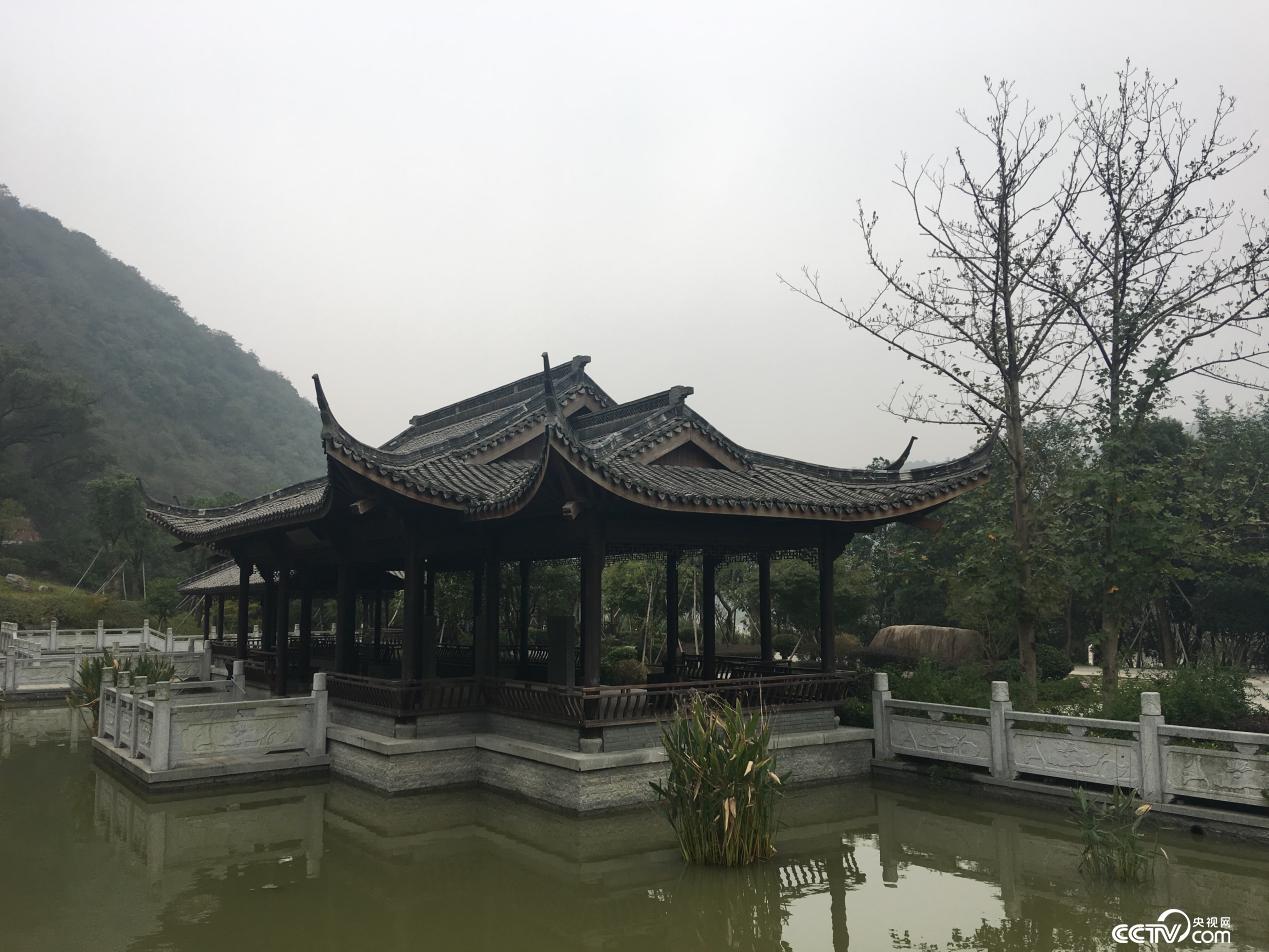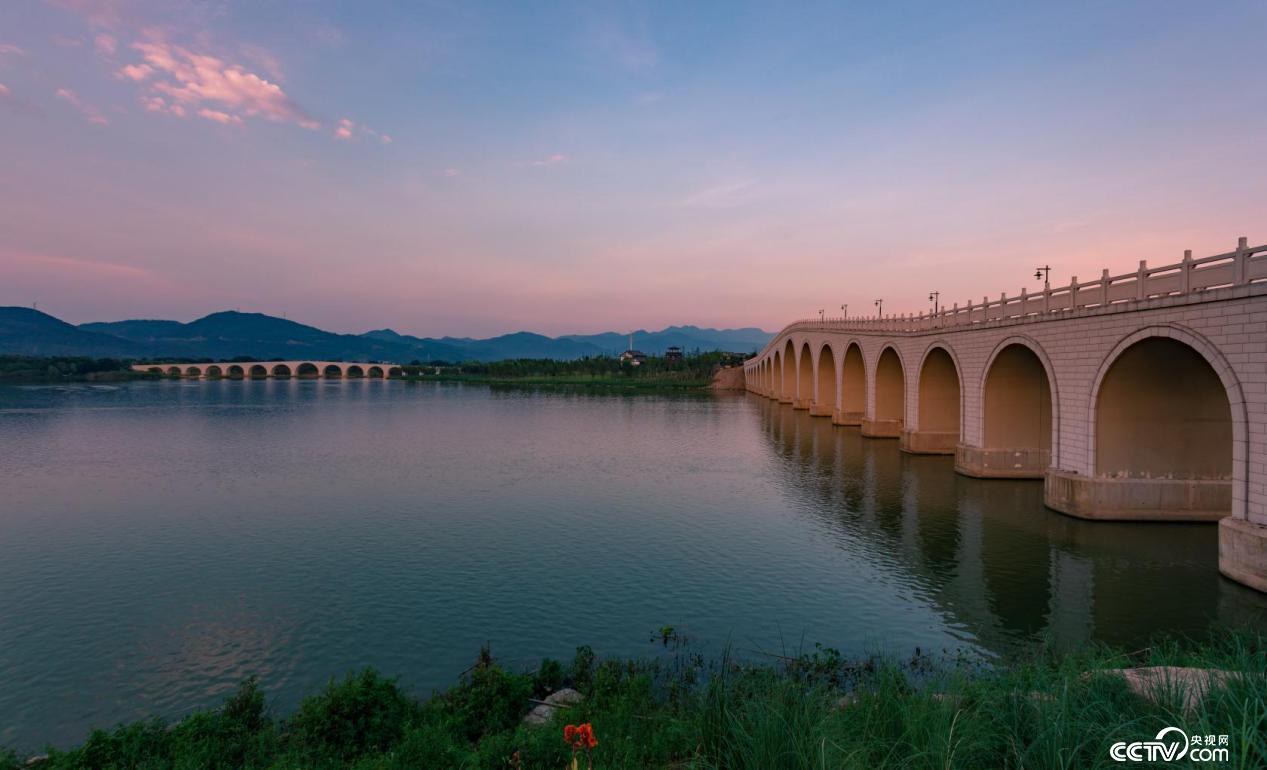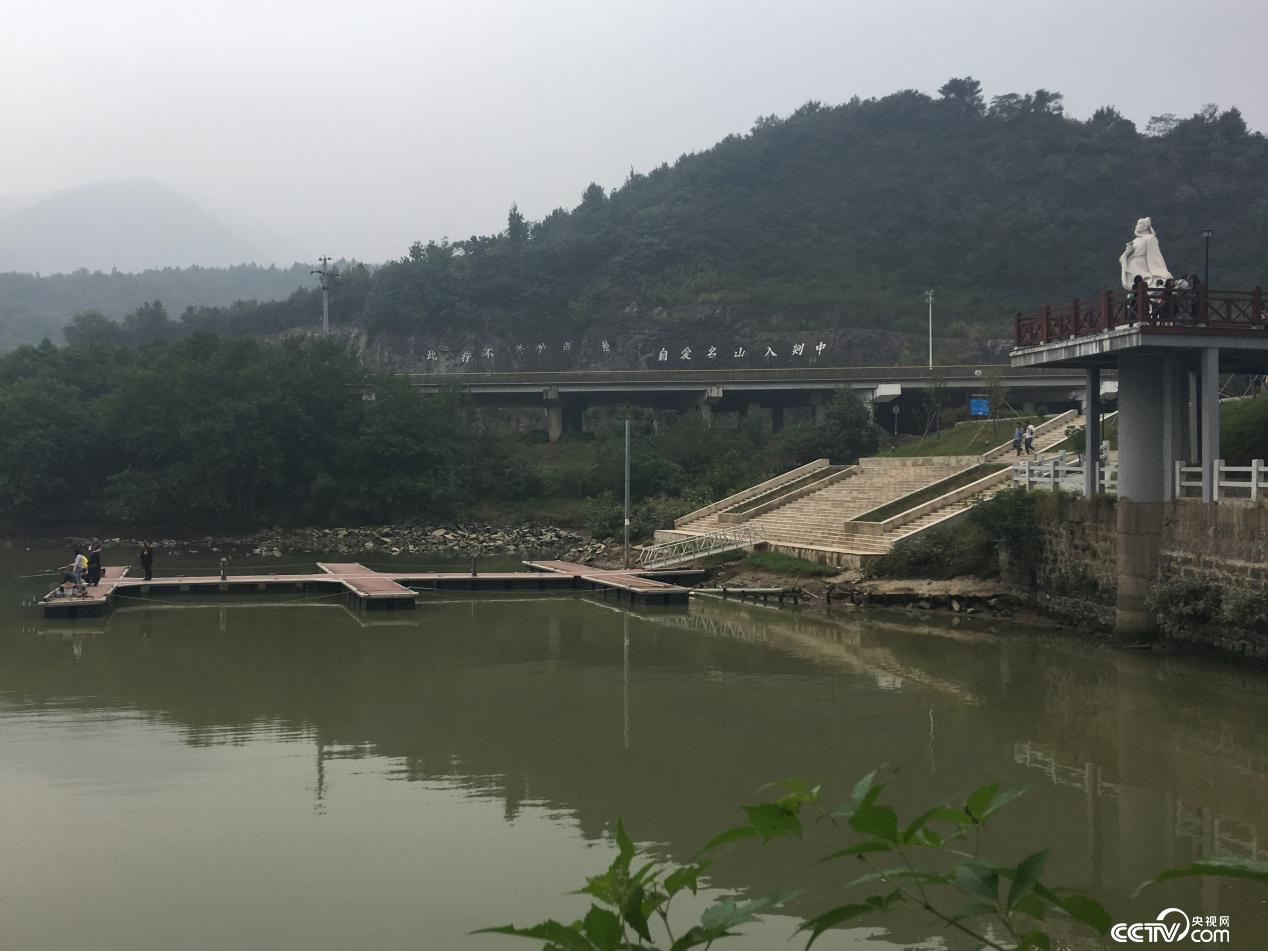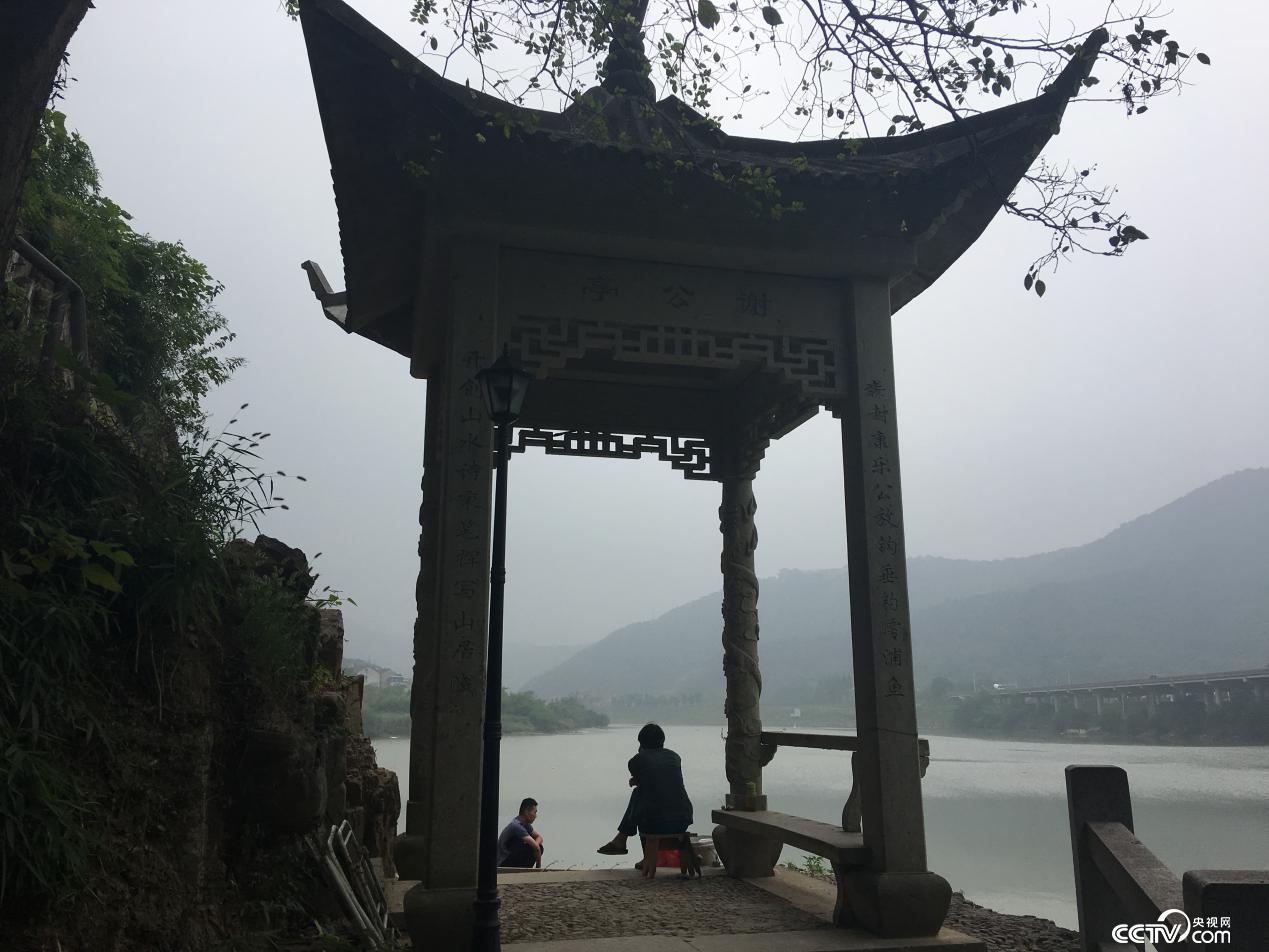
The original garbage dump near Yaoao Natural Village, Zhangpu Village, Shengzhou High-tech Zone has built an ecological park, which has become a good place for villagers to have fun. (Photo/Xu Hui)
Cctv news(Reporter Xu Hui) Before Typhoon Likima landed in Zhejiang on September 9th, 2019, Wang Jialiang, director of Jianglintou Village in Shengzhou Development Zone, made a bet with the villagers that the village would not be flooded as in previous years. In the end, Wang Jialiang won, and Wang Jialiang’s confidence came from the construction of Zhantou flood detention area and Tinghu City Park project.
Bamboo chops at home become souvenirs

A scene in the boat lake city park. (Photo courtesy of Shengzhou Water Conservancy Bureau)
Shengzhou urban area and key economic development zones are low-lying, with Zhantou and Jianglintou administrative villages as the center, forming substantive flood diversion areas in history, so they are called boat lakes.
"It’s easy to count when you eat in your stomach" is a popular saying in the local area. Because it is affected by floods every year, the people think that the food in the field is their own only after eating it.
Chen Xiaoni, a villager in Jianglintou, said that villagers have special feelings about water, and life and production are inseparable, but if there is too much water, it will cause disasters. Living in a flood diversion area, my family suffers from floods every year. "Last year, the rainy season flood came. Ten steps in front of our house, the flood rose to level 7. The first floor of low-lying people is flooded. "
To this end, in Zhantou, Jianglin and other villages, every household has a bamboo raft for the transfer of people and goods when the flood comes.
Since 2016, Shengzhou City has invested 1.5 billion yuan to start planning and constructing Zhantou flood detention area and Tinghu City Park project, of which 1.3 billion yuan will be used for flood detention area reconstruction and 200 million yuan will be used for landscape improvement project. On September 28th this year, Tuhu City Park officially opened. After the completion, the water area of Zhantou Flood Detention Area Boat Lake City Park is 3.4 square kilometers, accounting for about half of the water area of West Lake.
After enduring the test of "Lichima", "the bamboo rafts brought by villagers’ families are no longer used and can become souvenirs." Wang Jialiang said.
The abandonment of bamboo rafts in Jianglintou Village benefited from the new idea of "water resources, water ecology, water environment and water disaster overall management" in Shengzhou City.
At the same time as the construction of Zhantou Flood Detention Area Boat Lake City Park project, Shengzhou City has newly built 4.85 kilometers of reinforced dikes, 1 dam and 2 sluices.
The reconstruction project of Zhantou flood detention area is linked with water conservancy projects such as Siming Mountain along the mountain, XinSiming River and Tujiabu Drainage Station on the north side, which protects Shengzhou urban area and the main battlefield of economy and turns water disasters into water conservancy.
Turning "Dashuike" into "Ecological Lake" and turning the gravel factory into an ecological park.

Li Bai’s statue gazes at the clear water of the river in Zhangpu Village, on the edge of Shanxi River. The original sand yard behind the statue built a leisure square. (Photo/Xu Hui)
Tongxi, located in the upper reaches of Cao ‘e River, is the mother river of Shengzhou. Shengzhou City regards the improvement of water quality as the core of the construction of beautiful rivers and lakes, insists that any pollution must be removed, and comprehensively promotes the treatment of domestic sewage and the rectification of pollution industries.
Since July 2017, the water quality of the exit section of Shanjiang Shengzhou City has been upgraded from the original Class III water to Class II water, ensuring that the clear water from one river is sent downstream.
The section from Tujiabu in Shengzhou Development Zone of Tongjiang River to Zhangpu in Sanjie Town, with a total length of 18.7 kilometers, is the essence of the "Road of Tang Poetry in East Zhejiang". Zhangpu Temple and Tinghu City Park have become pearls on the "Road of Tang Poetry in East Zhejiang".
In addition, Boat Lake City Park has also created the largest single building in tang style in Zhejiang Province, the largest plant exposition park in Shengzhou, the largest waterfront flower sea in Shengzhou, the first artificial beach in Shengzhou and many other "Shengzhou firsts".
Among them, the Four Seasons Flower Sea in the park covers an area of 150,000 square meters, spreading the beautiful scenery of the four seasons with long grass, towering trees, colorful scenery and beautiful branches of Yushu, becoming an ecological garden and the lungs of the city. Strolling in the urban garden of Tuhu Lake is like walking in a picture.
There are many cases in Shengzhou where "Dashuike" has turned into an "ecological lake" and the gravel factory has become an ecological park.
The ecological park next to Yaoao Natural Village, Zhangpu Village, Shengzhou High-tech Zone has become a good place for citizens’ leisure and entertainment, but it was still a garbage storage point two years ago. Wang Lebing, secretary of the village branch, said that after the implementation of the river length system, he reflected the situation that garbage was randomly piled up along the river in the village, sand mining fields and pig farms polluted the river. Soon the sand mining and pig raising factories were banned, and a beautiful park built by the river appeared in front of the villagers.
Shen Juzhen, who lives in Zhangpu Village, is in front of her house. "There is sand mining in the river, and there is a layer of oil floating on the river. The square in front of my house is full of sand. " Nowadays, the place where sand is piled up is the square where citizens relax. "It is a pleasure to blow the river wind and see the beautiful scenery."
Humanistic integration "water rhyme" makes water conservancy more interesting

Villagers are fishing under Xie Gongting. (Photo/Xu Hui)
Never put off till tomorrow what you can, Liu Ruan meets an immortal, visits Dai on a snowy night, Wang Xizhi’s former residence, and Xie Lingyun’s fishing, all of which are numerous cultural allusions, cultural relics and historical sites in the Tongxi River Basin.
"If the water conservancy project does not do culture, I am sorry for the soil and water here." Xu Zhilin, an expert on water culture in Shaoxing, said.
It is understood that after preliminary collation and textual research, there were 158 poets chanting the river in the Tang Dynasty alone, with 542 poems and more than 20 related cultural relics protection sites. It can be said that in the "Road of Tang Poetry in East Zhejiang", there are the most poets who wrote poems for Tunxi, leaving the most poems and the most traces. Tunxi (Shengzhou City) is the core area of the "Road of Tang Poetry in East Zhejiang".
The seven islands in Tinghu City Park are connected by eight bridges, and the name of each bridge is named after historical celebrities and poems related to Tunxi. For example, Yishao Bridge named after Wang Xizhi, Andao Bridge named after Dai Kui, Taibai Bridge named after Li Bai and Zimei Bridge named after Du Fu.
In order to commemorate Wang Xizhi, Ma Yinchu and other famous people in Shengzhou, the park has planned and built a celebrity island, which has a totem square, a celebrity cultural wall and a celebrity pavilion. Here, you can not only enjoy the beautiful scenery, but also learn about the historical changes, cultural stories and customs of Shengzhou.
Xu Zhilin believes that with the continuous development of social economy and the continuous improvement of people’s material and cultural living standards, the functions of water conservancy are increasingly diversified and integrated. It is necessary not only to meet the needs of avoiding harm and providing water for production and life, but also to build a clear, beautiful, comfortable water environment that is close to people and water.
关于作者